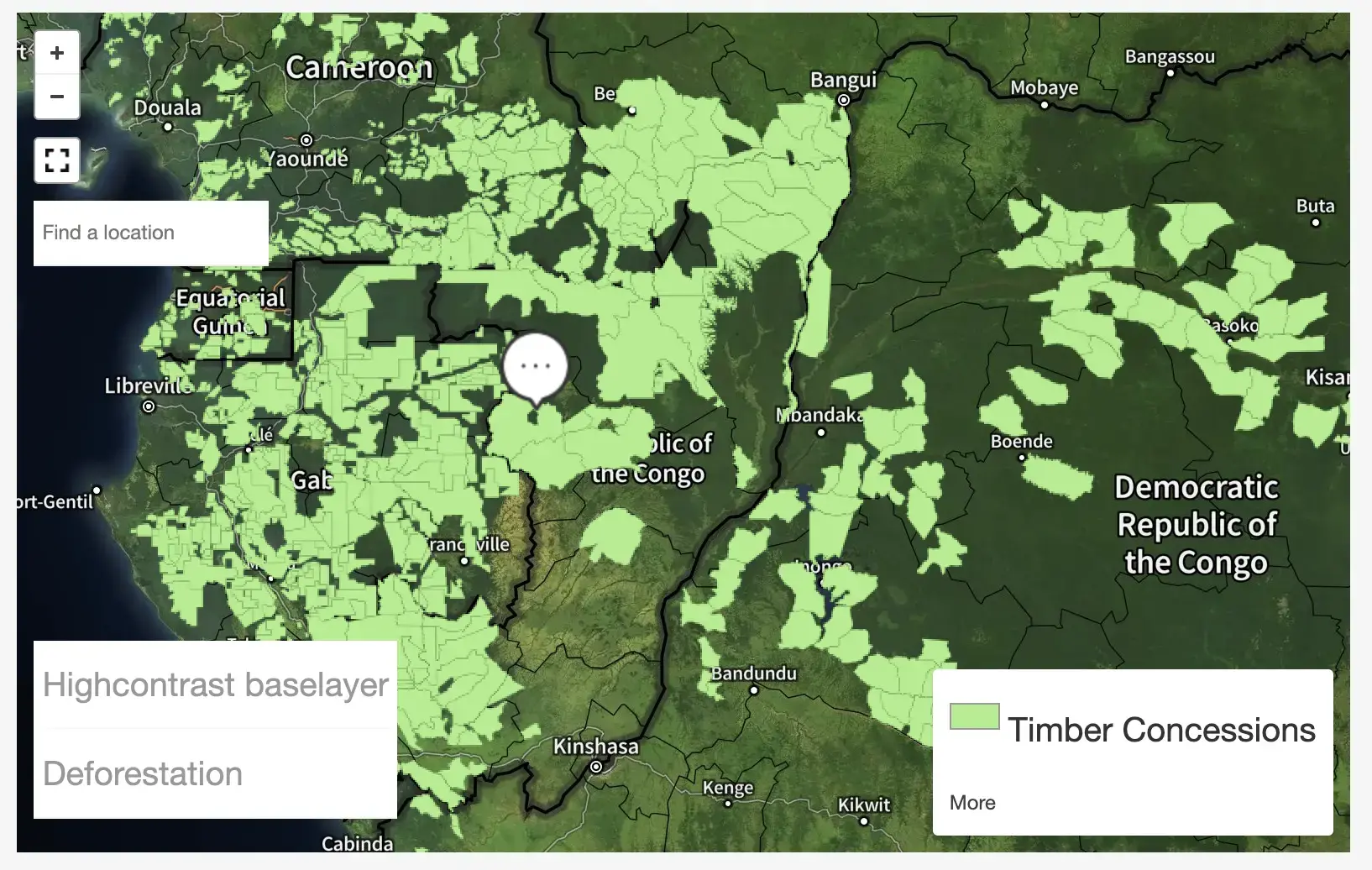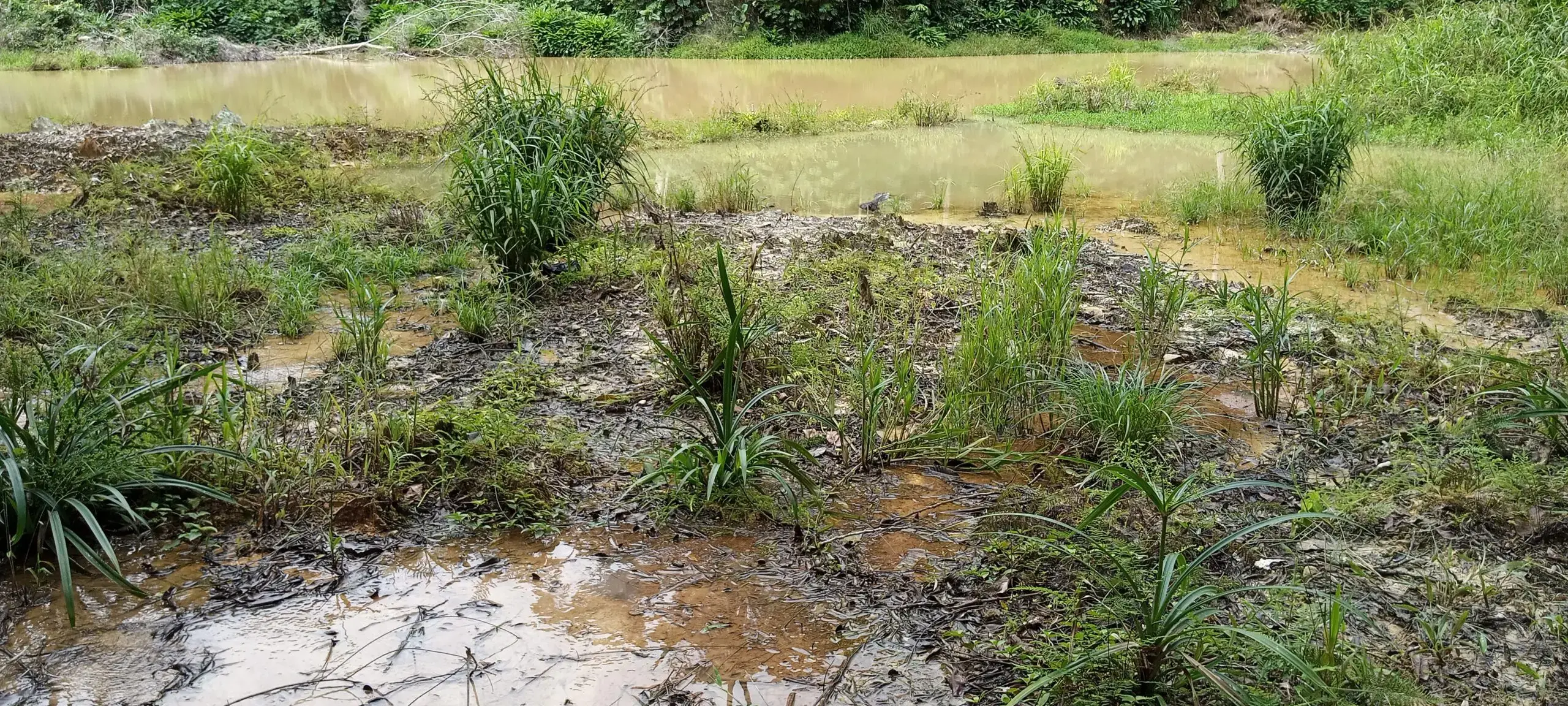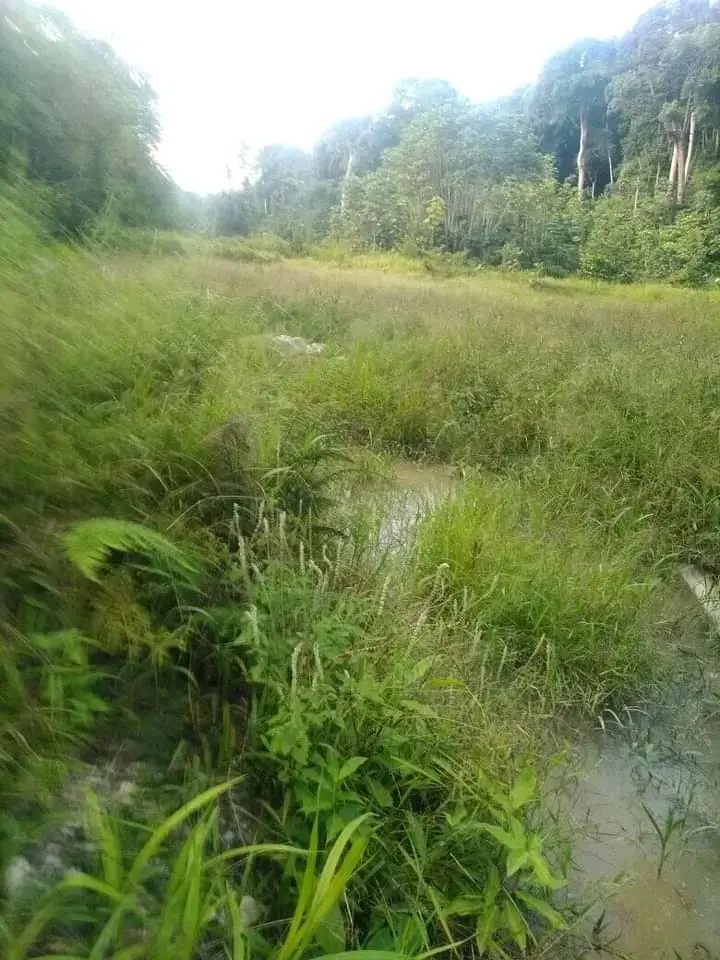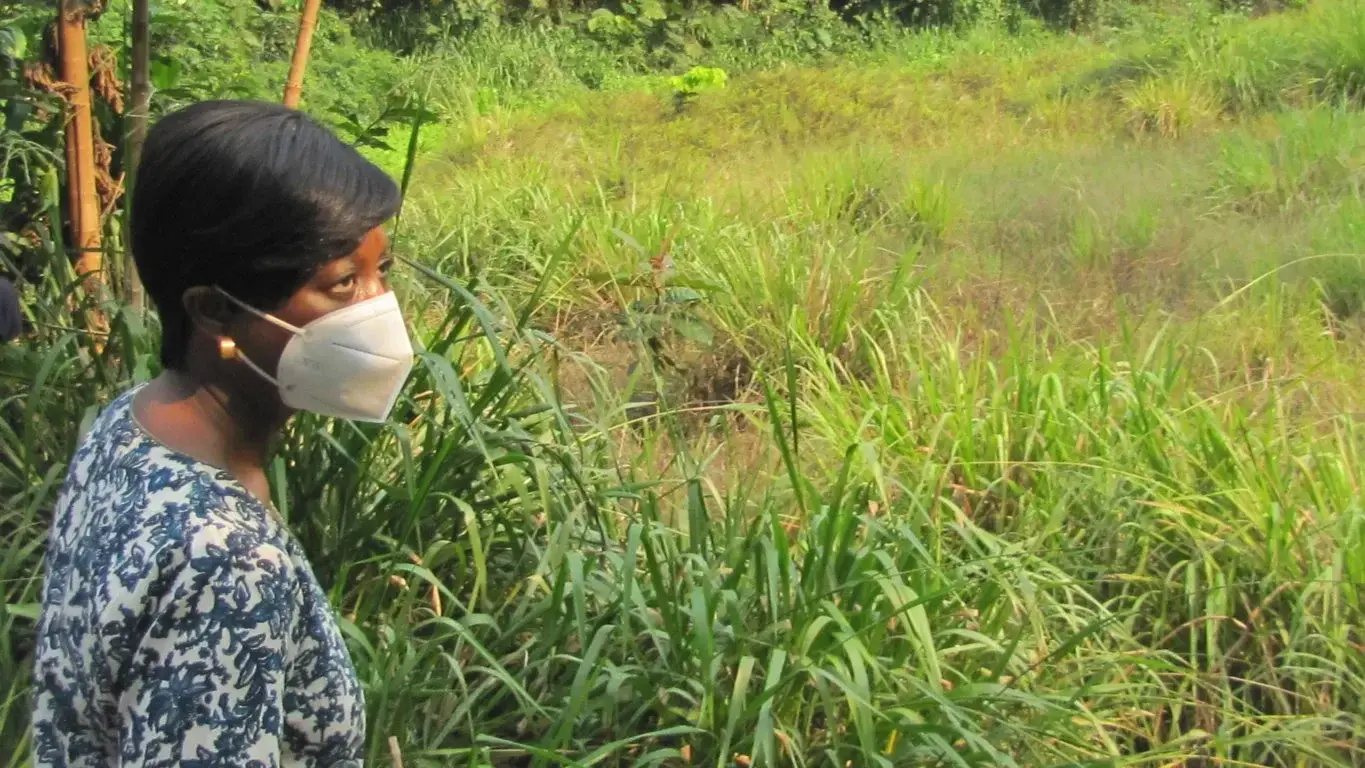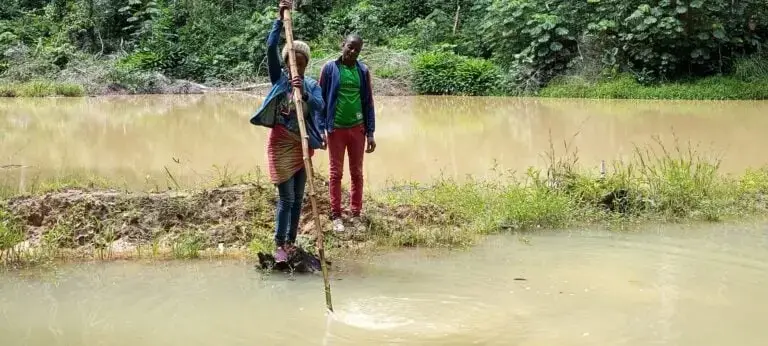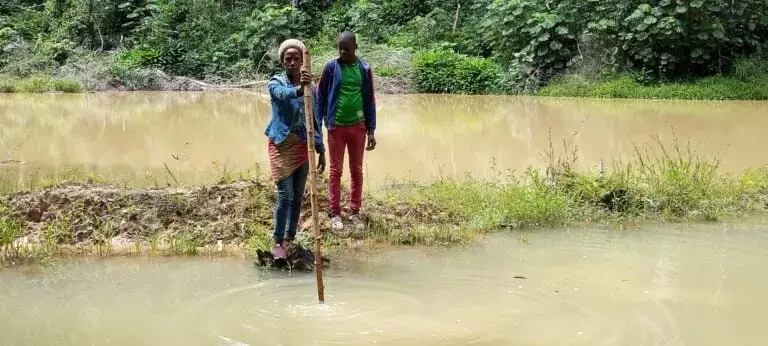This story excerpt was translated from French. To read the original story in full, visit Info Congo. You may also view the original story on the Rainforest Journalism Fund website here. Our website is available in English, Spanish, bahasa Indonesia, French, and Portuguese.
In 2019, the Chinese company Agil Congo had pledged to rehabilitate sites destroyed by its semi-industrial alluvial gold mining activities in the Kelle district. But three years later, inhabitants who lost 150 streams in 36 mining sites abandoned by Agil Congo claim that the operator has not respected its commitments.
Early afternoon in Otchouandzoko, 700 kilometers from Brazzaville. We are in northern Congo, in the district of Kellé, which is part of the Kellé-Mbomo Forest Management Unit (FMU) located in the Cuvette-Ouest region. Young people stroll through the village. Others, in the shade of a large safoutier, laze around with a glass of wine or play cards. This locality of 400 inhabitants is one of a dozen villages on the Andzoko-Akamou-Ndzoukou axis that have been severely impacted by alluvial gold mining.
Sitting in his small straw hut, the village chief Victor Essangapela remembers the years before. The gold that once made the inhabitants happy has become the source of their misfortunes. The village has lost twenty-seven of the twenty-eight streams that used to water it. "They have transformed them into stagnant and polluted ponds that generate mosquitoes never known here, causing skin and diarrheal diseases," says Essangapela.

As a nonprofit journalism organization, we depend on your support to fund journalism covering underreported issues around the world. Donate any amount today to become a Pulitzer Center Champion and receive exclusive benefits!
"We have lost everything."
17 kilometers from the village, Farrel, a young artisanal gold digger, contemplates a clearing as far as the eye can see. Ponds of polluted water, covered with grass in places, bumps of sand and gravel. This is what remains of the stream called "ampélé". Three other creeks are victims of a modification of their habitat: Ongama, Ndoungnou and Mwana 7". They are slowly coming back to life after the destruction of their ecosystem. "This was one of the sites of Agil. We used to mine gold artisanally in these streams, while preserving the environment. Agil took over our waters without any compensation," Farrel explains sadly. "The shores were lined with trees that gave us good fruit. Agil cut down everything, the streams disappeared. Even the gnetum africanum no longer exists and for the rest of our lives we will no longer have these trees that only grow on the banks of streams," laments the artisanal gold digger.
Clément Mbélé, the president of the Association Protège Moi Environnement (APME) based in Ewo, the chief town of the department, has often visited these forests as part of his activities. Clément, who accompanied us, said he no longer recognized the place. "Before, there was a primary forest here with large wood species such as azobes," he recalls.
